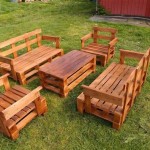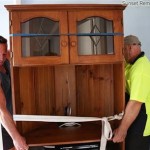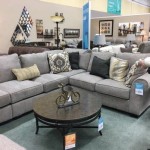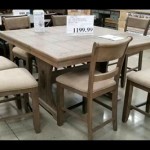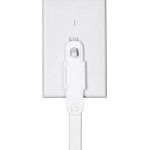How To Secure Outdoor Cushions To Wicker Furniture
Outdoor wicker furniture offers a blend of style and durability, making it a popular choice for patios, decks, and gardens. However, a common challenge associated with outdoor cushions on wicker furniture is their tendency to shift, slide, or even blow away in windy conditions. Securely attaching cushions to wicker furniture not only enhances comfort and aesthetics but also protects the cushions from damage and prolongs their lifespan. Several methods exist for achieving this, each with its own advantages and disadvantages. The most suitable approach will depend on factors such as the type of wicker, the cushion design, and the desired level of permanence.
Understanding the Problem: Why Cushions Move
Before exploring solutions, it’s important to understand why cushions move on wicker furniture in the first place. Several factors contribute to this issue. Firstly, the smooth surface of wicker offers little friction, allowing cushions to slide easily, especially when subjected to weight or movement. Secondly, weather conditions, particularly wind, exert force on the cushions, dislodging them from their intended position. Thirdly, the natural variations in cushion shape and size, combined with the often imperfectly uniform structure of wicker furniture, create gaps that facilitate slippage. Finally, the type of fabric used for the cushions affects their grip on the wicker surface; smoother fabrics are more prone to movement than textured ones. Ignoring these factors will likely result in implementing a solution that fails to properly address the root of the problem.
Methods for Securing Outdoor Cushions
Several effective methods exist to secure outdoor cushions to wicker furniture. These range from simple and temporary solutions to more permanent and robust attachments. The choice of method depends on factors such as budget, desired level of security, and aesthetic preferences.
Hook and Loop Fasteners (Velcro)
Hook and loop fasteners, commonly known as Velcro, offer a versatile and relatively non-permanent solution for securing cushions. This method involves attaching one side of the fastener (either the hook or the loop) to the underside of the cushion and the corresponding side to the wicker frame. The fasteners interlock, creating a strong bond that resists movement. Several variations of hook and loop fasteners are available, including sew-on, stick-on, and nail-on versions. The stick-on versions are generally suitable for lighter cushions and smooth wicker surfaces. Sew-on versions provide a more secure attachment to the cushion fabric, particularly for heavier cushions or fabrics that don't adhere well to adhesives. Nail-on versions are appropriate for wooden wicker frames but generally not suitable for resin wicker, as they can cause damage.
When applying hook and loop fasteners, it is crucial to prepare the surfaces properly. Clean the underside of the cushion and the wicker frame with a mild detergent and allow them to dry completely. This ensures optimal adhesion of the adhesive backing (if using stick-on fasteners). Position the cushions carefully before attaching the fasteners, as repositioning them after the adhesive has set can be difficult and may damage the wicker or the cushion fabric. Using multiple strips of hook and loop fastener, strategically positioned around the perimeter of the cushion, provides a more secure hold than relying on a single strip.
While hook and loop fasteners are effective for moderate wind conditions, they may not be sufficient for extremely strong winds. Furthermore, the adhesive backing of some stick-on fasteners can degrade over time due to exposure to sunlight and moisture, requiring periodic replacement. Finally, repeated use can weaken the interlocking strength of the hook and loop, necessitating replacement of the fasteners.
Cushion Ties
Cushion ties are fabric straps or cords sewn directly onto the cushions. These ties are then used to fasten the cushions to the wicker frame, providing a secure and adjustable attachment. Cushion ties are a common feature of many commercially available outdoor cushions, but they can also be added to existing cushions relatively easily. The durability of cushion ties depends on the strength of the fabric and the quality of the stitching.
To use cushion ties effectively, identify suitable attachment points on the wicker frame. These points should be sturdy and positioned to prevent the cushions from sliding or shifting. Wrap the ties securely around the frame and tie them in a knot or bow. Ensure the ties are snug but not so tight that they distort the shape of the cushion or damage the wicker. Regularly inspect the ties for wear and tear, particularly at the points where they are sewn to the cushion. Replace frayed or damaged ties promptly to maintain the security of the attachment.
The primary advantage of cushion ties is their adjustability. The tension of the ties can be easily adjusted to accommodate variations in cushion size or wicker frame dimensions. Furthermore, cushion ties are relatively low-cost and easy to install. However, they can be aesthetically intrusive, particularly if the ties are brightly colored or poorly matched to the cushion fabric. Additionally, cushion ties can become tangled or frayed over time, requiring maintenance or replacement.
Non-Slip Mats or Pads
Non-slip mats or pads, similar to those used to prevent rugs from slipping on hardwood floors, can provide a simple and effective solution for securing cushions to wicker furniture. These mats are typically made of rubber or foam and have a textured surface that increases friction between the cushion and the wicker. To use non-slip mats, simply cut them to the appropriate size and place them between the cushion and the wicker frame. The textured surface of the mat will grip both surfaces, preventing the cushion from sliding.
Non-slip mats are a relatively inexpensive and easy-to-implement solution. They require no permanent modifications to the cushions or the wicker furniture. Furthermore, they can be easily removed or repositioned as needed. However, the effectiveness of non-slip mats depends on the weight of the cushion and the smoothness of the wicker surface. Lighter cushions on very smooth wicker may still be prone to movement, even with a non-slip mat in place. Additionally, non-slip mats can trap moisture and debris, potentially leading to mold or mildew growth. Regularly inspect and clean the mats to prevent these issues.
Using D-Rings and Bungee Cords
This method combines the security of a more permanent attachment with the adjustability of cushion ties. D-rings are small metal rings that can be sewn onto the underside of the cushions. Bungee cords, also known as elastic cords, can then be used to connect the D-rings to the wicker frame. This creates a secure and adjustable attachment that can withstand moderate wind conditions.
To implement this method, securely sew D-rings onto the underside of the cushions, positioning them strategically to align with suitable attachment points on the wicker frame. Use strong thread and reinforce the stitching to ensure the D-rings remain securely attached. Then, loop bungee cords through the D-rings and around the wicker frame, securing them with the hooks or clips at the ends of the cords. Adjust the tension of the bungee cords to provide a snug fit without distorting the shape of the cushions. Regularly inspect the D-rings, stitching, and bungee cords for wear and tear. Replace damaged components promptly to maintain the security of the attachment.
The advantages of this method include its adjustability and relatively high level of security. The bungee cords provide some flexibility, allowing the cushions to move slightly without becoming dislodged. However, the D-rings can be visible if they are not positioned carefully, and the bungee cords may not be aesthetically pleasing. Furthermore, the metal D-rings can rust over time, particularly in humid environments.
Professional Upholstery Services
For a more permanent and professional solution, consider consulting with an upholstery service. Upholsterers can modify the cushions and the wicker furniture to create a secure and aesthetically pleasing attachment. This may involve adding custom straps, buttons, or other attachment devices. Upholsterers can also reinforce the cushion seams and use durable outdoor fabrics to ensure the cushions withstand the elements.
The primary advantage of using professional upholstery services is the high level of craftsmanship and customization. Upholsterers can tailor the attachment method to the specific design of the cushions and the wicker furniture. However, this option is typically more expensive than DIY solutions. Furthermore, it may require a longer lead time, as upholstery services are often in high demand.
Considerations for Choosing a Method
Selecting the most appropriate method for securing outdoor cushions to wicker furniture requires careful consideration of several factors. The weight and size of the cushions are important considerations, as heavier cushions require more robust attachment methods. The weather conditions in the area also play a significant role; windy environments necessitate more secure attachments. The aesthetic preferences of the homeowner should also be taken into account; some attachment methods are more visually appealing than others. Finally, the budget and DIY skills of the homeowner will influence the choice of method. Economical methods like non-slip mats may suffice for some, while others may prefer the more permanent solution of professional upholstery services.
Prioritizing these considerations will lead to a more effective and satisfying outcome. A well-secured cushion not only brings comfort but also enhances the aesthetic appeal of the outdoor space. The key is finding a balanced approach that combines security, aesthetics, and practicality.

S For Outside

10 Ways To Keep Patio Furniture Secure When The Wind Blows Sunnydaze Decor

How To Stop Cushions Slipping Off Rattan Furniture Rattantree

4 Ways To Keep Cushions On Outdoor Furniture

13 Simple Ways To Attach Cushions Patio Furniture Www Homelifeleisure Com

How To Secure Back Seat Cushions Patio Furniture Youtube

How To Store Outdoor Cushions 4 Easy Steps

Protecting Outdoor Wicker Furniture

Outdoor Patio Cushions Care For

No Sew Patio Cushion Covers Youtube
See Also

